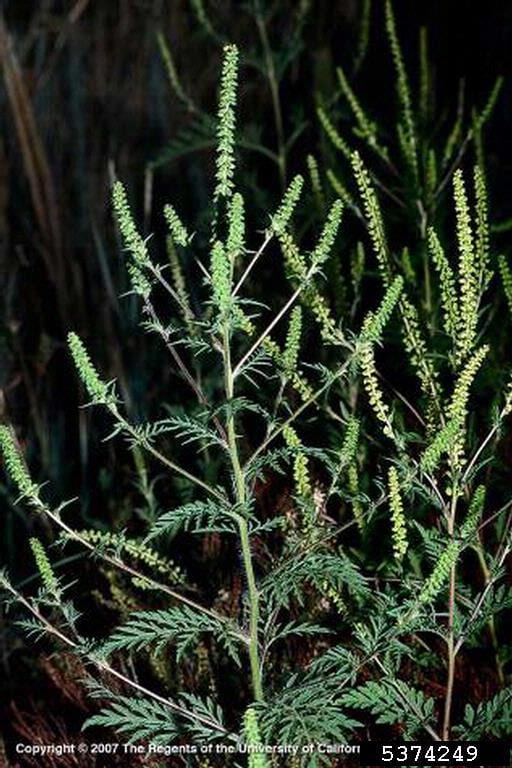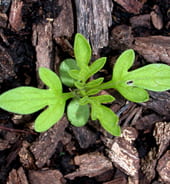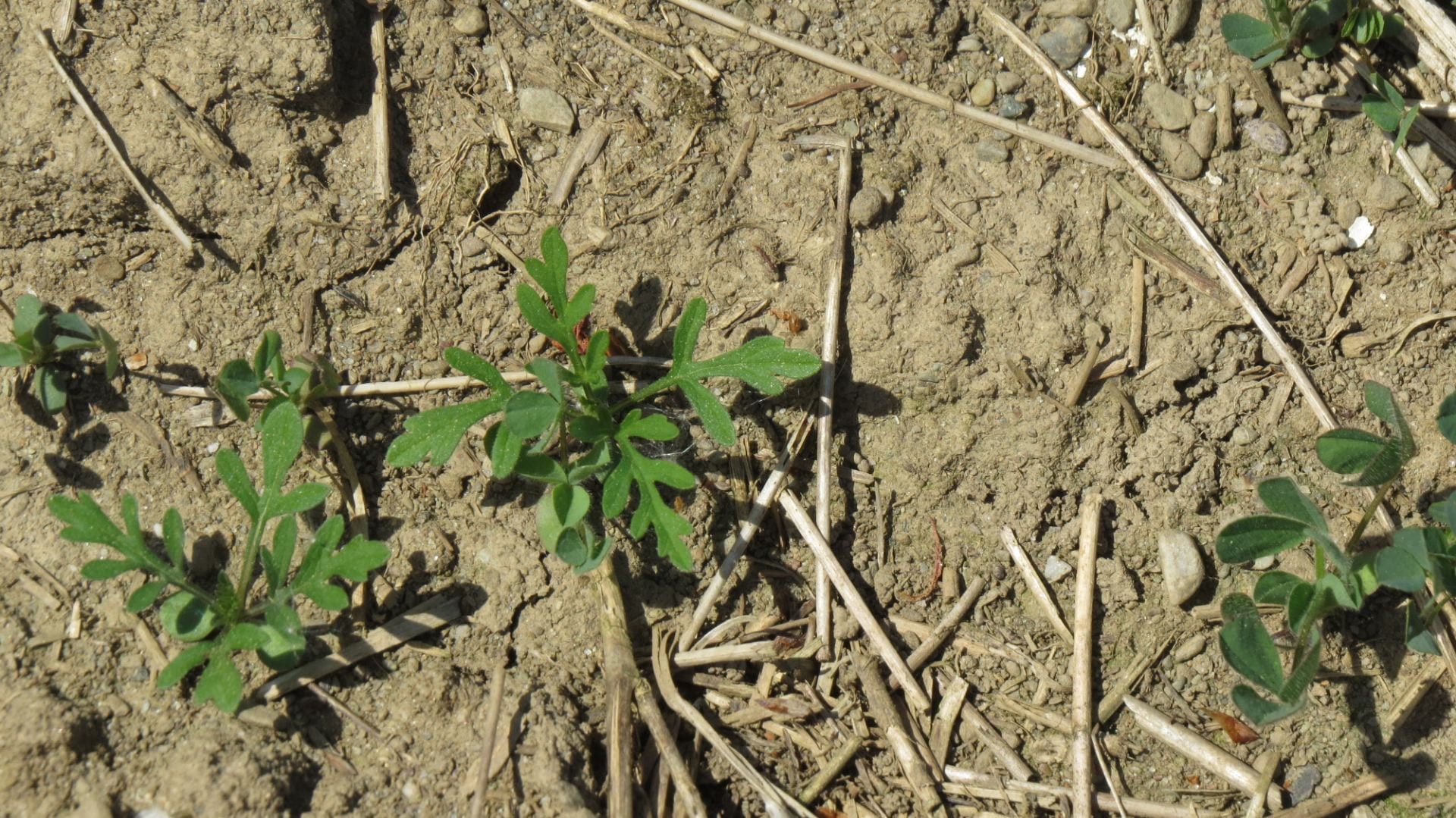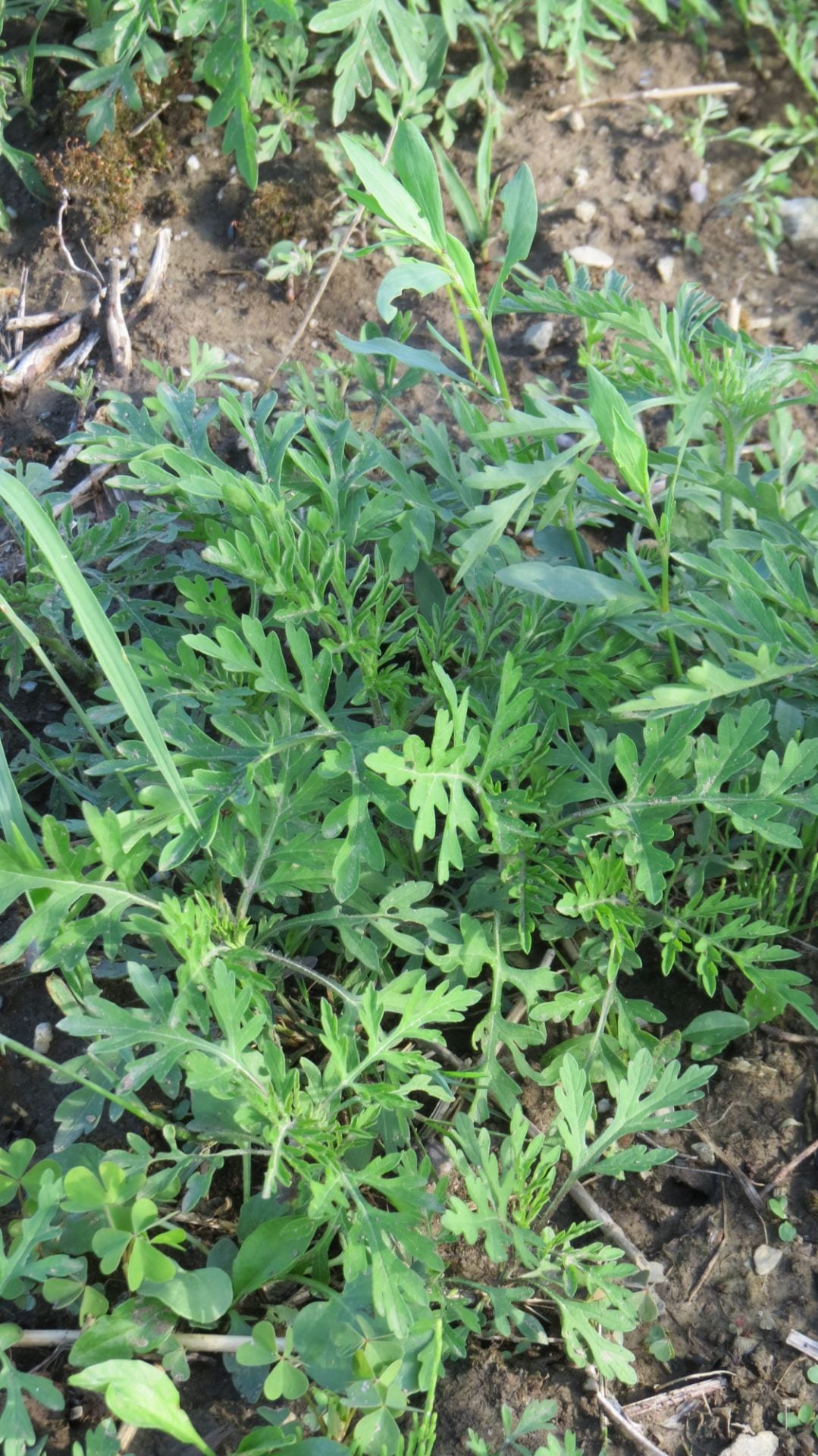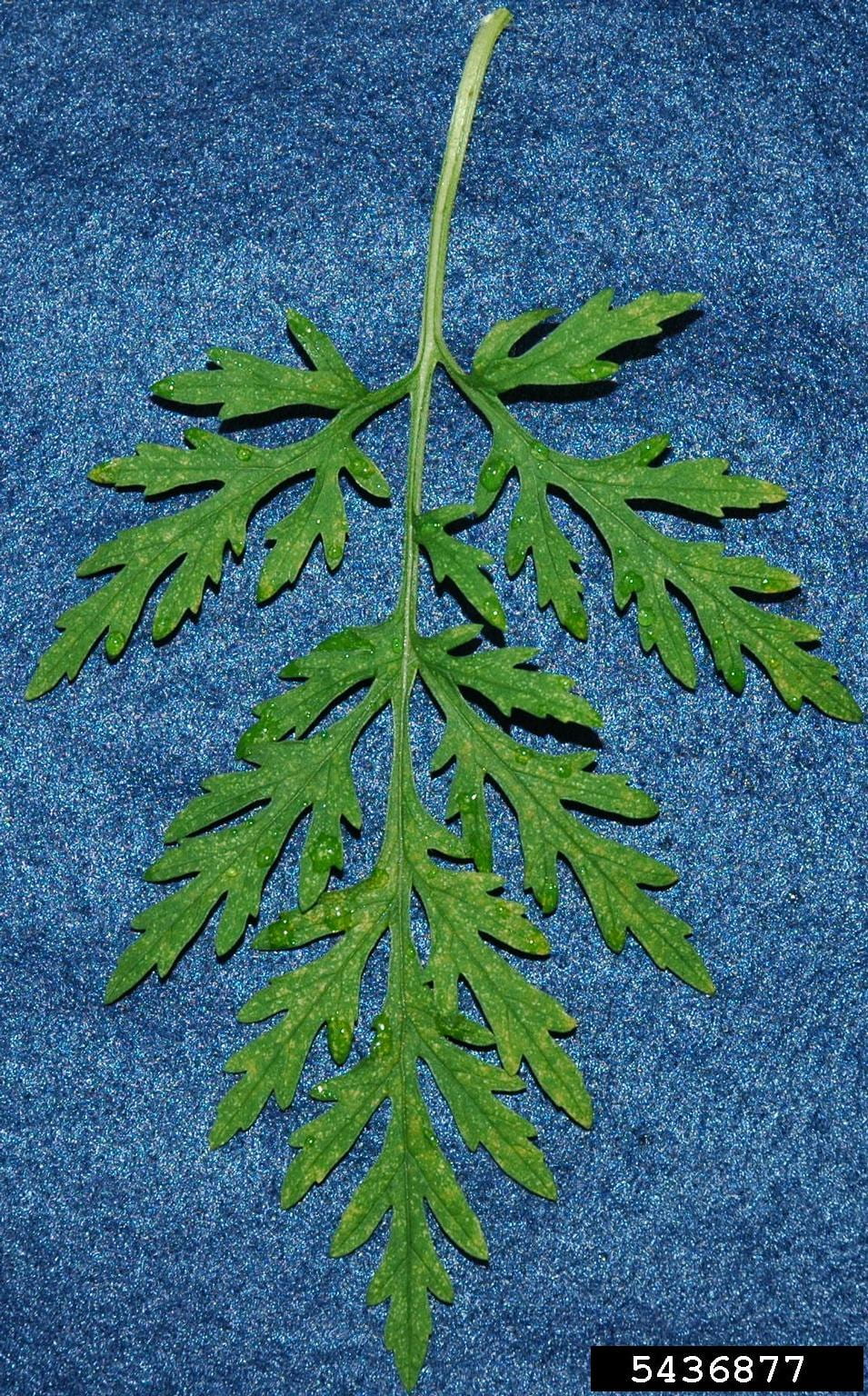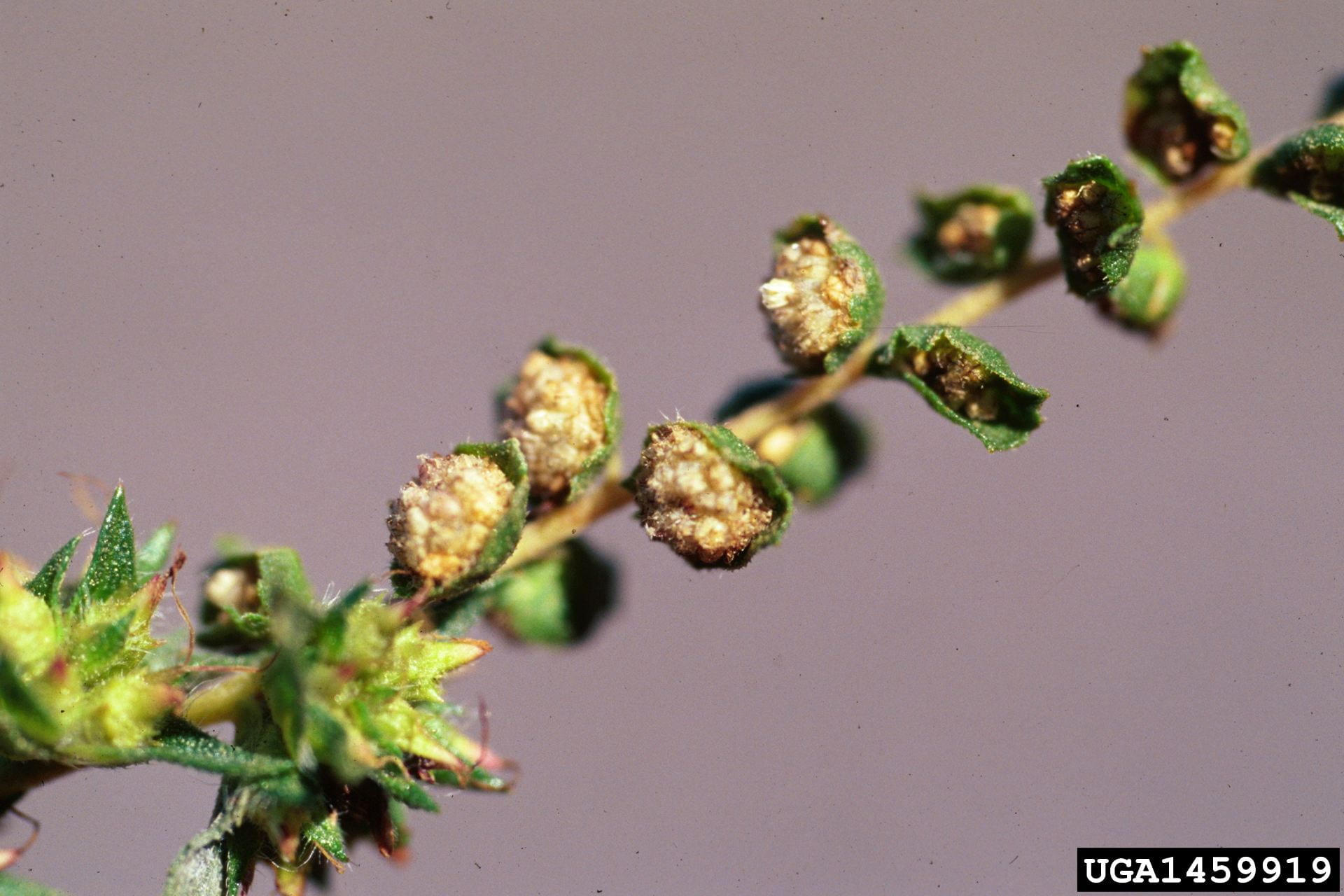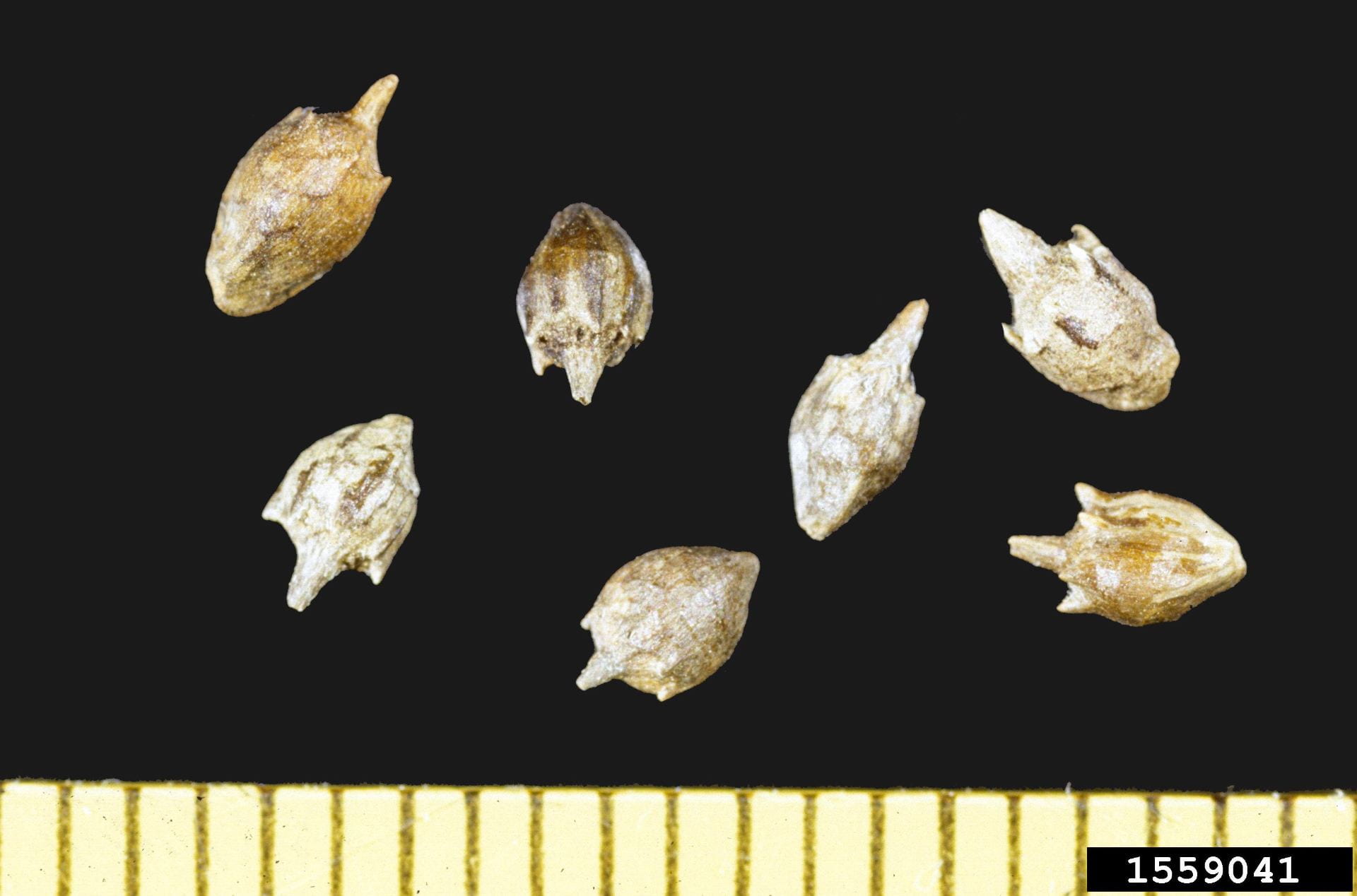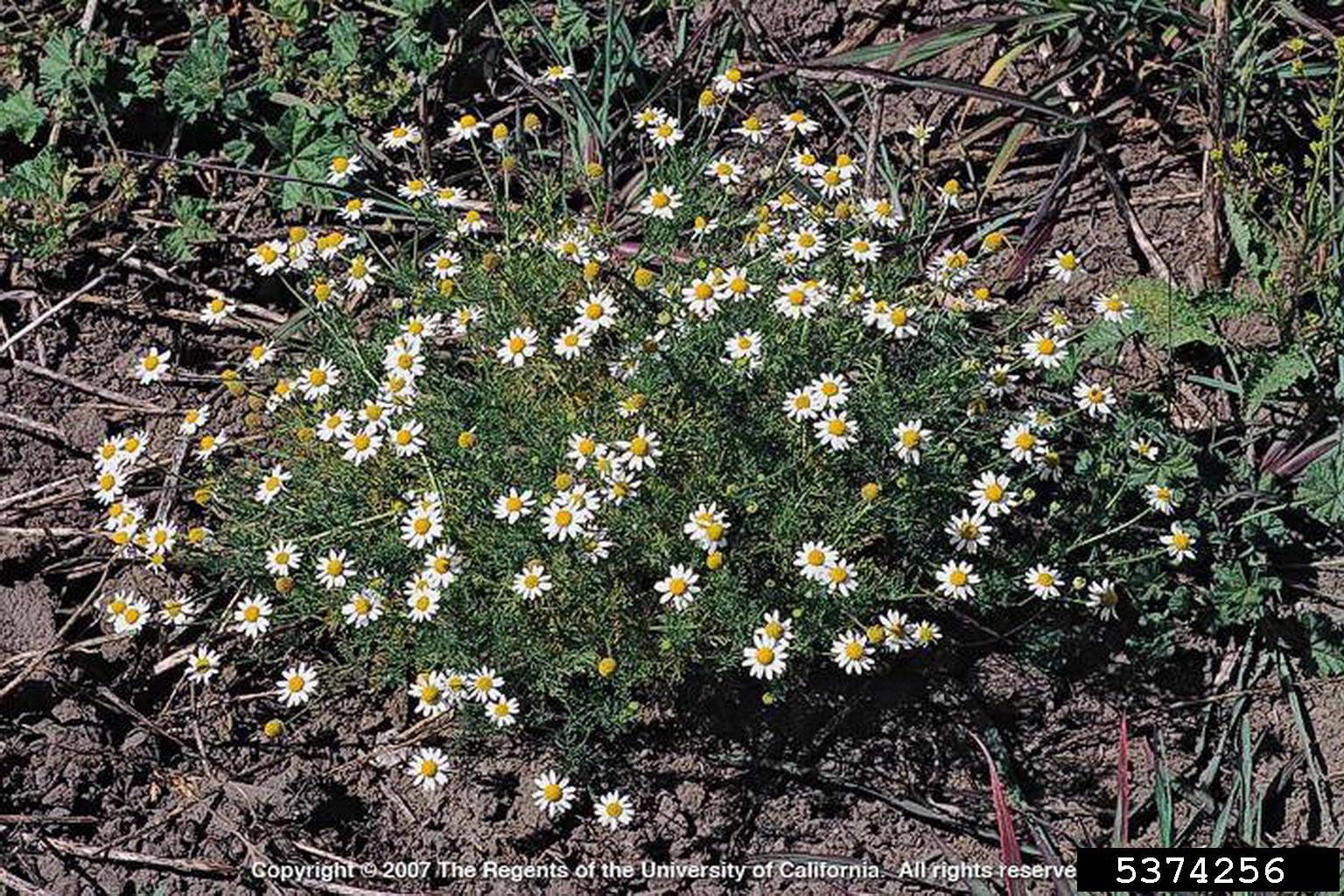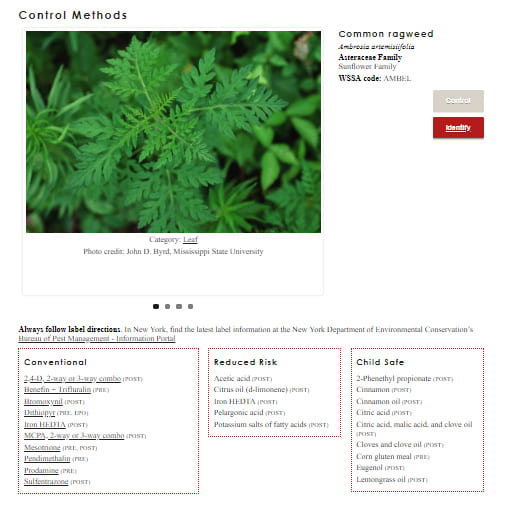Common ragweed (Ambrosia artemisiifolia) is a widespread and common agricultural, waste area, and garden weed in New York. It is a summer annual, can cause significant crop loss if left unmanaged for 2-3 weeks after planting, and is the main late-summer allergen in the US. It can be identified by its alternate, fern-like leaves, bushy habit, innocuous green flowers at the ends of its branches in late summer, and medicinal smell.
Identification
Seedlings: Common ragweed emerges from May through June; cotyledons are dark green, thick, and spatula-shaped, often with tiny purple spots on the edge. The first true leaves are opposite, hairy on top and very hairy below, and already have the fern-like or dissected form of adult leaves.
Common ragweed seedling, with cotyledons and first true leaves.
Image by Antonio DiTommaso of Cornell University.
Leaves: Leaves are once or twice compound. Lower leaves have longer petioles, but upper leaves sometimes seem to have no petiole at all.
Mature plant: Older plants are upright and bushy, up to six feet tall, with hairy stems and alternate leaves. Root systems are fibrous rather than tap-rooted, and shallow.
Flowers/Fruit: Flowers are tiny, inconspicuous, and green, and produce pollen that causes most of the late-season allergies in the eastern US. Male flowers are on spikes at the top of the plant; female flowers are tucked into join points between stems and upper leaves.
Similar species: Mayweed chamomile also has fern-like foliage, but is much smaller, forms a basal rosette, and has a daisy-like flower. Giant ragweed can be even taller than six feet tall, and has 3-lobed leaves that are arranged like fingers on a hand (palmate) rather than fern-like leaves (pinnately compound).
Giant ragweed leaves. Leaves can be entire to 5-lobed, but 3-lobed is the most common shape.
Photo by James H. Miller and Ted Bodner of the Southern Weed Science Society, via Bugwood.org.
Management
Common ragweed was one of the first weeds to develop herbicide resistance, and now has documented resistance to ALS inhibitors (Group 2, e.g. Classic and Pursuit), Photosystem II inhibitors (Group 5, e.g. atrazine), EPSP synthase inhibitors (Group 9, e.g. glyphosate), and PPO inhibitors (Group 14, e.g. Flexstar and Cobra). In New York, atrazine-resistant populations have been documented since the 1990s, and more resistance testing is currently underway at Cornell University in Dr. Sosnoskie’s lab.
Because of common ragweed’s resistance to some pesticide modes of action, conventional management often includes both pre- and post-planting applications and tank mixes of herbicides to ensure control.
Chemical control
Cornell University’s Turfgrass and Landscape Weed ID app offers suggestions for conventional and alternative chemical control options. For general guidance on weed control, get the latest edition of the Cornell Crop and Pest Management Guidelines.
Non-chemical control
Cornell University’s Weed Ecology and Management website provides ecological control options for common ragweed.
References
Uva R H, Neal J C, DiTomaso J M. 1997. Weeds of the Northeast. Book published by Cornell University, Ithaca NY. The go-to for weed ID in the Northeast; look for a new edition sometime in 2019.
Cornell Univeristy’s Weed Ecology and Management website. Contains a wealth of information on ecological management of agricultural and garden weeds. Look for a revamp of this site in 2020 or 2021.
Cornell University’s Turfgrass and Landscape Weed ID app. Identification and control options for weeds common to turf, agriculture, and gardens in New York; uses a very simple decision tree to identify your weed.
Purdue University (no date). Biology and Management of Common Ragweed. Extension publication. An excellent report with detailed chemical management prescriptions; New York’s pesticide laws differ from Missouri’s, so make sure the prescriptions are legal in New York. Authors: Tom Jordan, Glenn Nice, Reid Smeda, Christy Sprague, Mark Loux, Bill Johnson.
Take Action website ragweed management page, accessed June 27 2019. Website devoted to succesful management of herbicide resistant weeds and the adoption of practices that reduce the development of new herbicide resistant weed populations.

